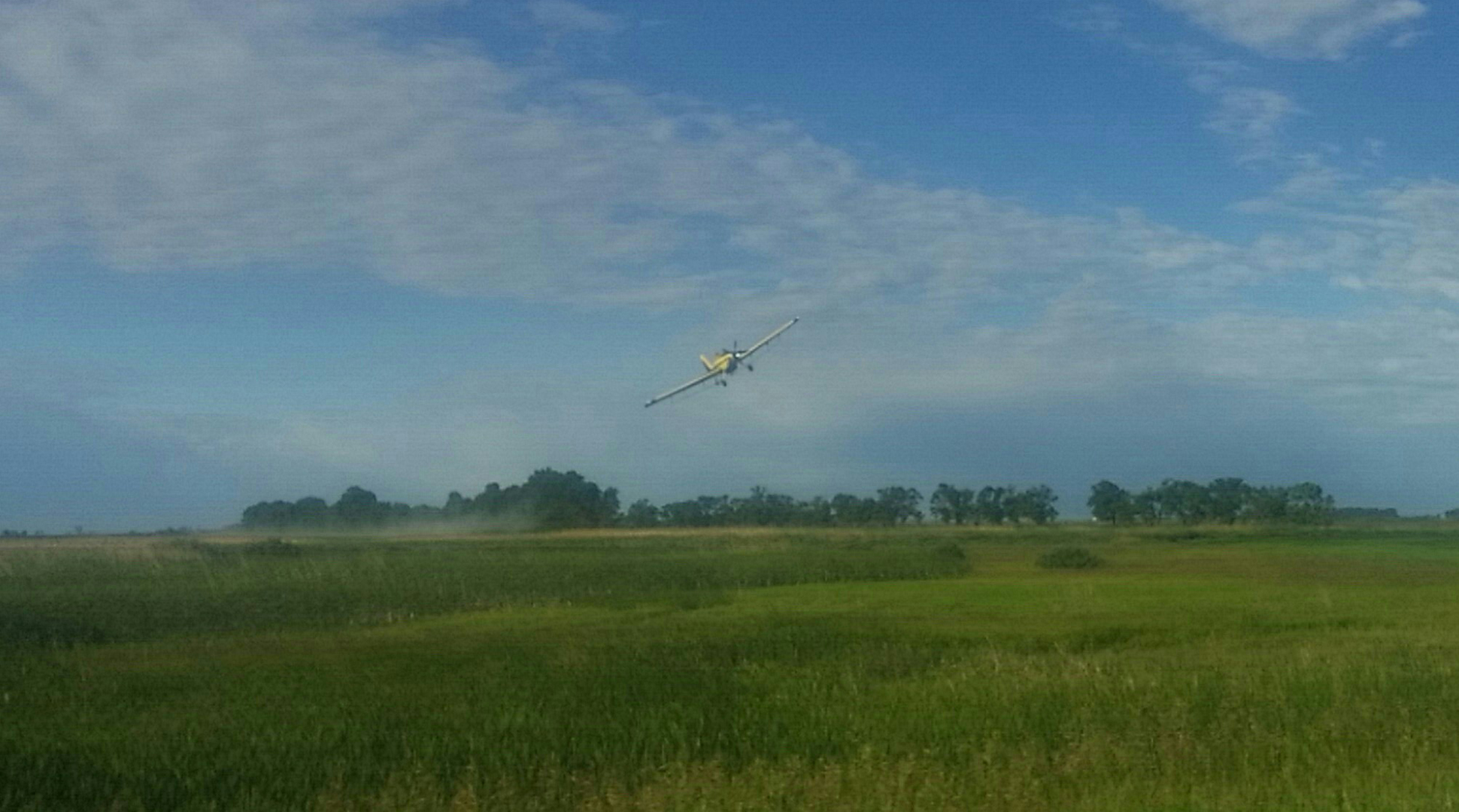by Courtney Meduna, agronomist
If you’ve been driving around North Dakota lately you have likely seen a crop duster or two in the air. You may be wondering what they are doing this time of year and why they seem to be more prevalent in 2019 than they have been in past growing seasons.
Aerial application is a tool that farmers use for several reasons, including:
- The crop in the field is too large for the ground applicator to get above
- Wet conditions do not allow for ground applicators to get into the field
- Disease and other pest pressure mitigation
If you wonder why farmers talk about the weather all the time, it’s not just to know if their crop is going to get more moisture to grow. They must watch those forecasts to find out the risk potential of several diseases. Even pests are driven by weather. Hot and dry weather often produces a different group of insects than wetter years.
This year a large portion of North Dakota finds itself quite wet, which makes it difficult for a ground applicator to get into the fields without getting stuck. Wet conditions also increase the risk for several diseases. One example of a wet-weather disease we get concerned about is Sclerotinia (aka White Mold). White mold can be found in many of the crops growing in North Dakota including soybeans, canola, and sunflowers. A disease like white mold can devastate a crop and significantly reduce its yield potential. Farmers must keep an eye on forecast maps and crop reports to decide whether they should make a fungicide application. They will often use aerial applicators for this job because, if it’s wet out, they likely cannot get through the field with their ground applicators without getting stuck. In the case of sunflowers, the crop is often too tall for a wheeled applicator to get above the crop canopy.
Another disease we grow concerned about is fusarium head blight (aka Scab) in our small grain acres. If a wheat crop becomes infested with Scab it can create infections so bad the harvest won’t be able to be sold. Farmers can mitigate this risk by choosing to apply a fungicide to protect their crop. Again, they are constantly looking at disease maps and weather forecasts to decide if an application is necessary. It’s important farmers manage their risk of diseases like this so that they can continue to provide good quality products into the market.
Applications like this are not an easy decision for farmers to make. It becomes a measure of risk when they must decide whether to spend several extra dollars per acre to control a disease. The flip side to that is losing several dollars an acre and possibly having a crop that cannot be taken to market due to quality issues.
Airplanes come with much of the precision equipment you see in farm equipment today. They have the ability to shut off and turn on at specific points, so they don’t make double passes. They are able to use auto-steer, so they follow a straight pattern and are able to put the product they are applying on the intended targets without very much drift.
2019 finds much of North Dakota wetter than normal and disease forecast maps have been showing high risk for several diseases. Without airplanes it would be near impossible to protect the crops from devastating disease and insect infestations.
